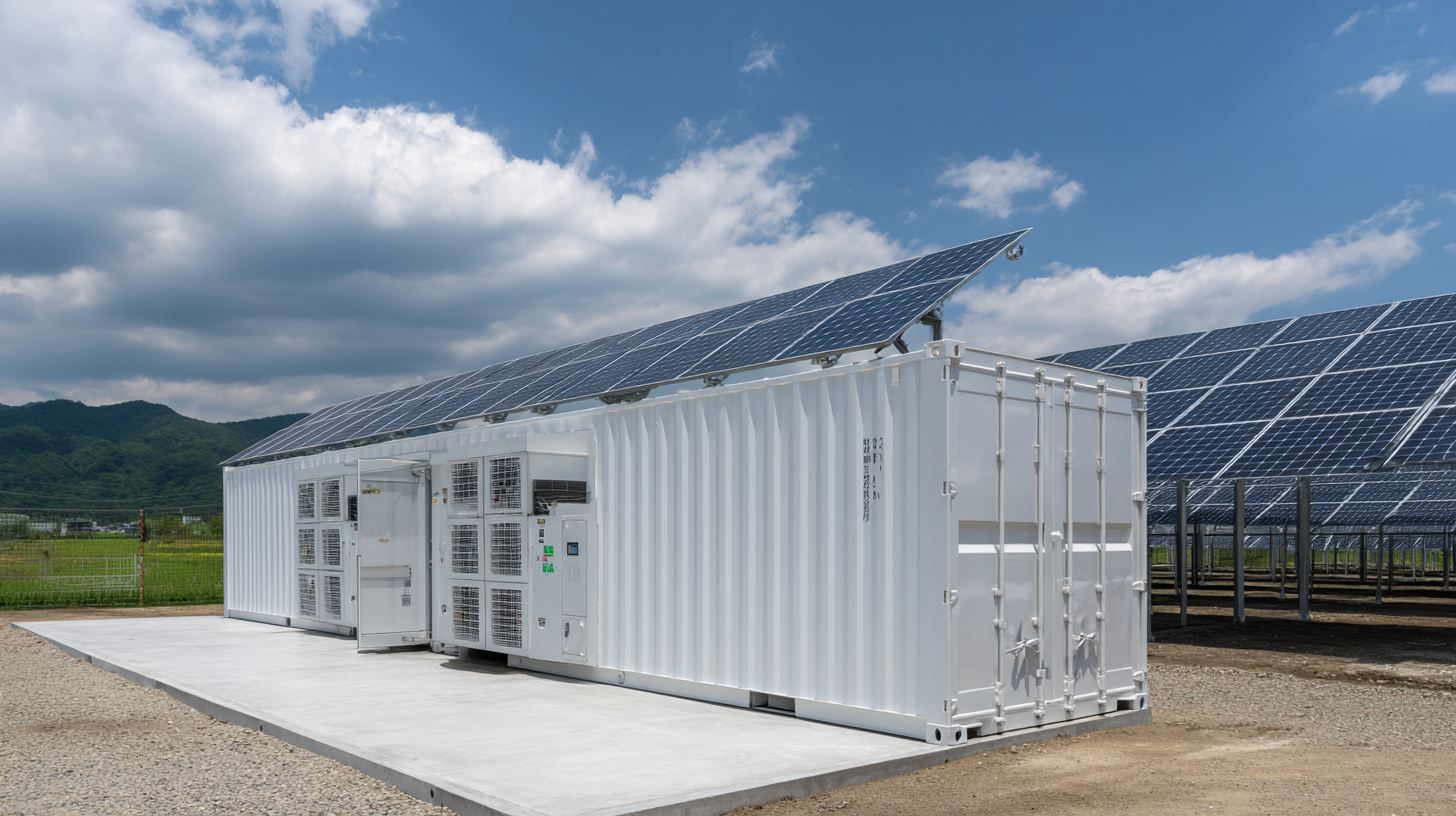As the global demand for renewable energy surges, the importance of effective energy storage solutions has never been more critical. The Solar Energy Storage System (SESS) market is projected to reach a staggering $26 billion by 2025, according to a recent report by ResearchAndMarkets.com. This growth is driven by the increasing adoption of solar energy across residential and commercial sectors and the urgent need for efficient energy management due to fluctuating energy demands. Innovative approaches to solar energy storage not only enhance system performance but also improve accessibility and reliability for end-users. In 2025, advancements in technology and manufacturing capabilities, particularly from leading factories in China, will play a pivotal role in shaping the future of SESS, building a foundation of trust and efficiency that will enable widespread acceptance and implementation across the globe.

As we look towards 2025, the importance of solar energy storage becomes increasingly clear in our fight against climate change and the push for renewable energy sources. Solar energy, while abundant during the day, often faces the challenge of intermittent availability. Effective storage solutions are critical for harnessing this energy and making it available when demand peaks, particularly during nighttime or cloudy days. Advanced battery technologies, such as lithium-ion and next-generation solid-state batteries, are paving the way for more efficient and sustainable energy storage systems.

Moreover, the integration of smart technology with solar energy storage systems enhances their functionality and reliability. By utilizing artificial intelligence and machine learning, these systems can optimize energy use, predict peak consumption times, and provide seamless transitions between stored energy and grid supply. This not only maximizes the efficiency of solar energy but also supports grid stability, making solar a more viable option for everyday energy needs. As we approach 2025, investing in innovative storage solutions will play a pivotal role in promoting widespread solar energy adoption, reducing reliance on fossil fuels, and ultimately achieving a sustainable future.
As we move towards 2025, the landscape of solar energy storage solutions is on the brink of transformation. Key innovations are paving the way for more efficient and sustainable solar energy systems. One of the most significant advancements is the development of high-capacity lithium-silicon batteries, which promise greater energy density and longer life cycles compared to traditional lithium-ion options. This breakthrough allows for a more compact design while enhancing efficiency, ultimately making solar energy storage more accessible to homeowners and businesses alike.
Another notable trend is the integration of artificial intelligence (AI) in energy management systems. By utilizing AI, users can optimize their energy consumption patterns, predicting peak usage times and adjusting storage accordingly. This innovation not only facilitates smarter energy use but also enhances the overall efficiency of solar power systems. Additionally, the emergence of hybrid storage technologies, which combine multiple forms of energy storage, is revolutionizing the way we capture and utilize solar energy. These systems are designed to maximize energy retention and minimize waste, leading to a more resilient and sustainable energy infrastructure.
When considering the best solar energy storage systems for 2025, it’s crucial to adopt a systematic approach to evaluate your options. Start by assessing your energy needs. Calculate your household's average energy consumption and peak demand. This will help determine the size of the storage system required to meet your specific needs. Understanding your energy usage patterns will enable you to select a system that not only stores enough energy but also optimizes your utility costs by reducing peak demand charges.
Next, examine the various technologies available in the market. Lithium-ion batteries dominate the current landscape due to their high energy density and efficiency. However, alternatives such as flow batteries and lead-acid systems may offer benefits depending on your unique situation. Investigate the lifespan, efficiency, and warranty offered by manufacturers, as these factors will significantly impact long-term satisfaction and system performance.
Lastly, consider the scalability of the solution. A system that can be easily expanded in the future will provide flexibility as your energy demands grow or change. By taking these steps, you can confidently choose a solar energy storage system that aligns with your goals for sustainability and resilience in 2025.
As we approach 2025, the integration of smart technology into solar energy storage systems is set to revolutionize energy management. The global market for solar energy storage is expected to reach approximately $19 billion by 2025, driven largely by advancements in artificial intelligence and IoT (Internet of Things). By utilizing smart algorithms, these systems can efficiently predict energy usage patterns and adjust storage and distribution accordingly, minimizing waste and enhancing sustainability.

Tips: Consider implementing a home energy management system (HEMS) to maximize the benefits of your solar storage. These systems intelligently monitor and control energy consumption, helping you optimize your energy spend while making the most of your stored solar energy. Moreover, integrating features like real-time data analytics can provide insights into your energy usage, enabling more informed decisions about energy habits.
Beyond just improving efficiency, the synergy between solar storage and smart technology facilitates demand response strategies. According to a report by BloombergNEF, implementing such strategies could reduce peak demand by as much as 30%. This potential substantiates the need for residential and commercial users to adopt systems that not only store energy but actively manage it, ultimately contributing to a more stable and resilient energy grid.
As the demand for sustainable energy solutions continues to grow, navigating the incentives and policies for solar storage adoption becomes increasingly vital. According to a report by the U.S. Department of Energy, the implementation of solar energy storage systems has seen a remarkable increase, projected to reach a market size of $19.5 billion by 2025. However, various factors, including local and federal incentives, play a critical role in facilitating this transition. The Investment Tax Credit (ITC) remains one of the most significant incentives for homeowners and businesses, covering 26% of the installation costs for solar energy systems coupled with storage.
In addition to tax credits, state programs and utility incentives are pivotal in reducing the overall costs associated with solar storage systems. For instance, California's Self-Generation Incentive Program (SGIP) offers cash back for energy storage installations, making it easier for consumers to adopt these technologies. Industry data shows that states with comprehensive incentive programs have reported 50% faster adoption rates compared to those without. By understanding and leveraging these incentives, stakeholders can better position themselves for the rapid advancements expected in solar energy storage technology over the coming years.
| Storage Technology | Capacity (kWh) | Efficiency (%) | Cost ($/kWh) | Incentives Available | Policy Impact |
|---|---|---|---|---|---|
| Lithium-ion Batteries | 10 | 90 | 300 | Federal Tax Credit | High |
| Lead-acid Batteries | 12 | 80 | 200 | State Rebates | Moderate |
| Flow Batteries | 15 | 75 | 400 | Grants | High |
| Sodium-ion Batteries | 20 | 85 | 250 | Tax Incentives | Moderate |
| Supercapacitors | 5 | 95 | 500 | Investment Tax Credit | Low |